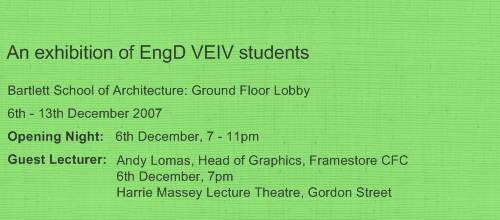| [Mojtaba Bahrami] |
[Mobile Real-Time Kinematic GPS positioning] |
|
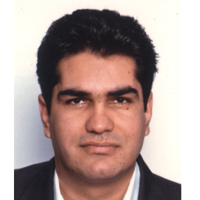 |
m.bahrami at cs.ucl.ac.uk
Up to now, centimetre level kinematical
positioning has only been attainable using
expensive and dedicated devices and software
applications. This EngD programme involves
research into the use of low-cost,
single-frequency GPS receivers (such as those
used in mobile handhelds) to obtain high
accuracy positioning. A method which does appear
to offer the promise of highly accurate position
estimates is the use of Real-Time Kinematical
(RTK) techniques. The Ordnance Survey’s OSNet™
Network-RTK Global Navigation Satellite Systems
(GNSS) infrastructure has the potential to
provide high accuracy positioning and navigation
for an expanding range of consumer and business
applications. Using OSNet™, this project had as
its aim to investigate, implement, and test a
range of GNSS processing techniques and models
to assess and determine which are most suitable.
The project’s end result has the potential to
underpin key government and commercial
initiatives that require cost-effective highly
accurate positioning.
[ http://www.cs.ucl.ac.uk/staff/m.bahrami/] |
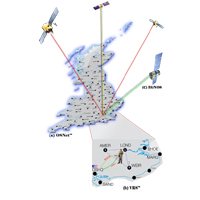 |
| |
|
|
| [Erica Calogero] |
[Getting from A to B and Back] |
|
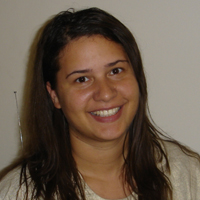 |
e.calogero at ucl.ac.uk
The research explores the
impact of school design on pupil movement.
Spatial cofiguration analysis and agent-based
simulation techniques are used to analyse a
sample of school designs. Observation studies
have been designed to gather data for the study.
Quantitative data will be collected on the
pupils' movements and occupation patterns.
Qualitative data will also be gathered on
their opinions of the design. The intended
result is to consider the efficacy of existing
models and analysis techniques for school
design. It is hoped that in the process, light
will also be shed on the potential impact of
the physical design of schools on pupil
aspiration and attainment, as well as their
behaviour, once socio-economic variables have
been accounted for.
[www.urbanrisk.com]
|
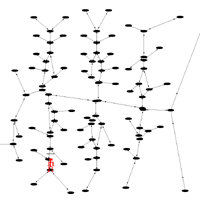 |
|
|
|
|
|
[Sean Hanna] |
[Addressing complex design problems through inductive learning] |
|
 |
s.hanna at ucl.ac.uk
This research uses machine
learning algorithms to deal with the
complexities of architectural design problems
that are either too computationally cumbersome
to model or impossible to state explicitly. As
an alternative to traditional engineering
optimisation, such techniques can provide faster
and more intuitive methods of working with
complex systems. Methods are presented for
deriving solutions based on existing precedents
in two types of design task: space frame design
and the social configuration of office spaces.
[www.sean.hanna.net]
|
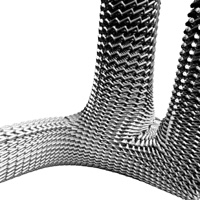 |
|
|
|
|
|
[Katrin Jonas] |
[Multi-Objective Considerations in Form Generation] |
|
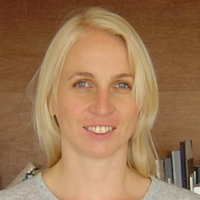 |
Katrin.Jonas at burohappold.com
The intention is to develop
an interactive digital method to design
structural envelopes in which the building
components as much as their global
configurations are informed by representative
conceptual, structural, manufacturing and
construction considerations. To make use of the
fact that we can reduce time and space through
computational capacity we employ a
multi-objective evolutionary technique to evolve
and search for solutions which reflect defined
parameter and fitness criteria. The process
developed is supposed as a learning tool for
understanding design decision making and their
impact onto the design at the intersection of
Architecture and Engineering.
[www.burohappold.com]
|
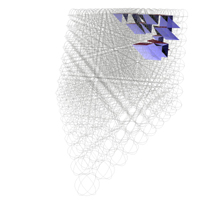 |
|
|
|
|
|
[Chris Leung] |
[Dynamic Environmental Control By Passive
Environment Emulation] |
|
 |
christopher.leung at ucl.ac.uk
This research is in the field
of dynamic architecture, buildings that respond
to their environment. Designing dynamic
architecture presents a particular modelling
challenge to architects and engineers. The
outcome of a modelling exercise depends to an
extent on the quality of the knowledge about the
interactions between a system and its
environment over time. This knowledge may be
improved by using working physical prototypes
and recording their interactions in a realistic
environment, this provide data to validate and
tune virtual models. The topic of this research
is to investigate tools that could support the
improvement of virtual models in this way using
case-studies. The case-studies look at an
example of a responsive construction element
that may be used to animate a dynamic
architecture. The research outcome may be used
to evaluate the performance of a dynamic
architecture by having available an accurate and
robust model of behaviour. The first pilot study
looks at the behaviour of passive wax pistons as
a drive element and how this may be used to
animate a dynamic construction element, an
evaluation looks at the changes to the energy
performance of a building envelope using such a
drive element. The image capture shown is from a
collaborative project in the Kielder Forest with
Phil Ayres and Bob Sheil of Sixteen*(makers), a
dynamic sculpture that responds to temperature
change using a passive wax piston.
[www.chrisleung.org]
|
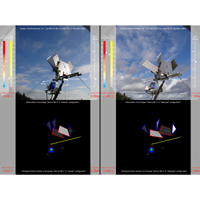 |
|
|
|
|
|
[Abel Maciel] |
[Digital modelling as a collaborative management of architectural production] |
|
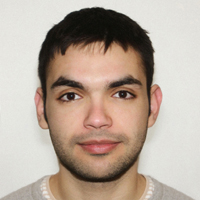 |
mail at abelmaciel.com
This project will explore the
hypothesis of graphical modelling of design as
an integration strategy for the management of
building construction projects. It is planned to
develop in two stages: The first one will
investigate geometrical modelling as the pivot
for determinants of architectural design, such
as sustainability and planning principles. By
developing digital modelling tools for specific
case studies, the exercise will look for
conflicts and efficiencies of the modelling
process when contextualized in a
multidisciplinary environment. This will inform
a second stage, which will investigate methods
to preserve and trade design assets generate by
the different parties organising a B.I.M from
the initial architectural conceptualization
through all phases of a construction project.
The geometrical modelling techniques to be
develop will also explore the significance of
intelligent systems as a constituent of the
building representations and their applicability
as an optimization tool for design co-ordination
in the virtual collaborative work environment.
[www.abelmaciel.com]
|
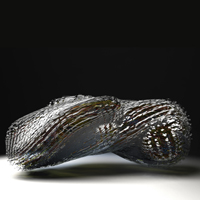 |
|
|
|
|
|
[Karen Martin] |
[Designing for In-Between-Ness] |
|
|
|
karen.martin at ucl.ac.uk
The aim of the research is to
explore the integration of mobile technologies
into the existing spatial and social networks
that make up a city. The focus of the research
is on the design of location-based services for
the urban environment and how the properties of
engagement, appropriateness, form and use might
influence, and be influenced by, the spatial and
socio-cultural setting in which these designs
are located.
[www.prusikloop.org]
|
 |
|
|
|
|
|
[Alastair Moore] |
[Image Parsing Using Model-based Priors] |
|
 |
a.moore at cs.ucl.ac.uk
I work in the field of
Computer Vision, a branch of Artificial
Intelligence, whose goal is to teach computers
to understand natural images. Natural images are
those that you see with your own eyes or those
captured with standard cameras; no special
optics, modalities or constrained lighting
conditions are required. Humans are very good at
this; Computers are not!
My research involves parsing images, that is
trying to understand the relationship between
all objects in a scene, rather than detecting
particular objects. More specifically, I am
interested in parsing road scenes.
[www.amooreucl.co.uk]
|
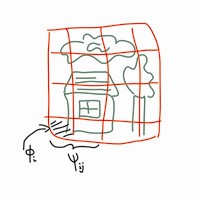 |
|
|
|
|
|
[Jamie O'Brien] |
[Mapping Mental Imagery onto Complex Social-Spatial Thresholds Using Virtual Environments] |
|
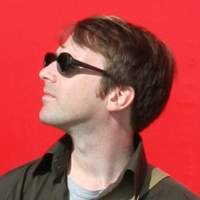 |
jamie.obrien at uclmail.net
Brain injury can profoundly
disrupt the everyday processes of perception,
leading to a world that is fragmented, noisy and
often debilitating. Virtual reality as a
technology of perception can provide a way of
rebuilding the subject’s ‘body image’ in the
context of complex social spaces. This
subjective map can accommodate the ever-shifting
parameters and content of the environment, and
can change in dimension and detail as the
subject recovers his or her sensory-motor
function. The challenge ahead is to establish a
stable, universal system that can be readily
used by neuro-rehabilitation clinicians and
their patients.
[http://www.uclmail.net/users/jamie.obrien/]
|
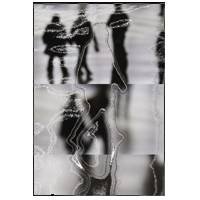 |
|
|
|
|
|
[James Tompkin] |
[Dynamic Video-based Environments] |
|
 |
j.tompkin at cs.ucl.ac.uk
Real-time rendering using
traditional computer graphics techniques has
difficulty producing realistic, natural images.
An alternative to these techniques are
image-based techniques. Image-based or
video-based rendering (VBR) attempts to produce
realistic virtual environments by using camera
captured images as input to the scene. Capture
is often conducted using fish-eye lenses or
camera arrays. The task in VBR is in warping
these captured realistic images into a
convincing virtual environment. Many
difficulties exist: rendering 'stochastic'
dynamic objects (trees, fire) and 'purposed'
dynamic objects (cars, pedestrians), integrating
non-VBR objects consistently, varying lighting
conditions post-capture, et cetera. This
research, in association with the BBC, is
attempting to meet some of these difficulties so
as to provide realistic, dynamic virtual
environments.
[www.cs.ucl.ac.uk/staff/j.tompkin]
|
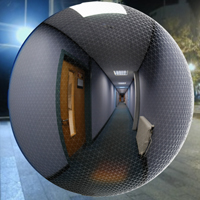 |
|
|
|
|

